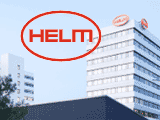 Ihre Suche 618403-01-3 stimmt mit keinem Produkt überein. Sie k?nnen Folgendes berücksichtigen:
Ihre Suche 618403-01-3 stimmt mit keinem Produkt überein. Sie k?nnen Folgendes berücksichtigen:
Rechtschreibprüfung
Verwenden Sie weniger Schlüsselw?rter
Verwenden Sie andere Schlüsselw?rter
Wenn es sich um ein neues Produkt handelt, finden Sie es innerhalb von drei Arbeitstagen



